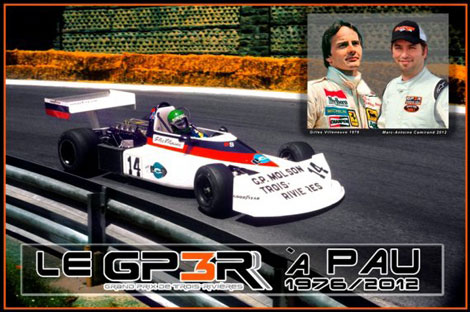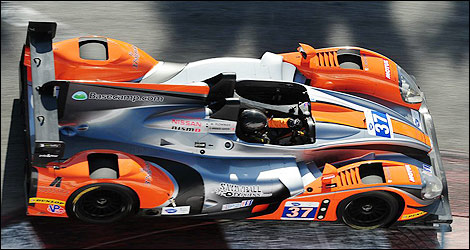BRIGHTON, ON — The early downpour did nothing to dampen the enthusiasm of either supporters or participants at the first Brighton to London Eco-Run launch this morning. On hand to kick off the event were several members of the media, representatives from event partners CAA and Natural Resources, and Brighton's Mayor, Mark Walas ,who officially started each car with a wave of the green flag.
Inspired by Britain's historic London-to-Brighton vintage rally, the Eco-Run was created to promote consumer awareness of the various solutions available to fight rising fuel costs. These range from simple changes in driving habits to the latest in manufacturer's fuel-saving technology - from the tiny electric cars, plug-in hybrids and the start/stop functions in high-end performance cars.
During the run, our aim is to meet or exceed the official Energuide ratings in each of the 23 vehicles in real-world driving over the course of three days.
 |
| Photo: Lesley Wimbush |
My first run was at the wheel of a 6-speed MINI Cooper over a 40-km route that was primarily hilly country roads, and small-town stop-and-go traffic. The average fuel consumption of 6.5L/100km was slightly higher than its 5.6L/100km officially rating. Fortunately, there are six more legs before the averages are calculated.
On the 66.6-km route from Cobourg to Oshawa, I achieved 5.8L/100km in the Hyundai Sonata Hybrid, just slightly higher than its 5.1L/100km official combined rate.
En route, we stopped at the University of Ontario Institute of Technology (Uoit), which boasts state-of-the-art testing chambers for vehicles and components. The fascinating tour included demonstrations of "shaker tables" that subject the vehicle to a simulated road test of any degree of surface or severity.
UOIT boasts the world's most sophisticated climatic wind tunnel - and it's also the quietest. We experienced first-hand the frosty chill of the -40 below cold chamber - used for cold-start testing and determining the durability of seals and shocks. Here they can produce a snowstorm in July - or the climate of Arizona or Dubai in January.
I spent leg three with the Lexus CT 200h, achieving an average of 4.9L/100km over 51.5 km - compared to its officially recorded 4.6L/100km.
Clearly - I should spend some time tonight reading the "Autosmart" pamphlet of fuel-conserving driving tips supplied by Natural Resources Canada. Perhaps tomorrow's driving will show a bit more conservative restraint.
 The latest auto news, reviews, prices, product and vehicle releases.
The latest auto news, reviews, prices, product and vehicle releases. 








